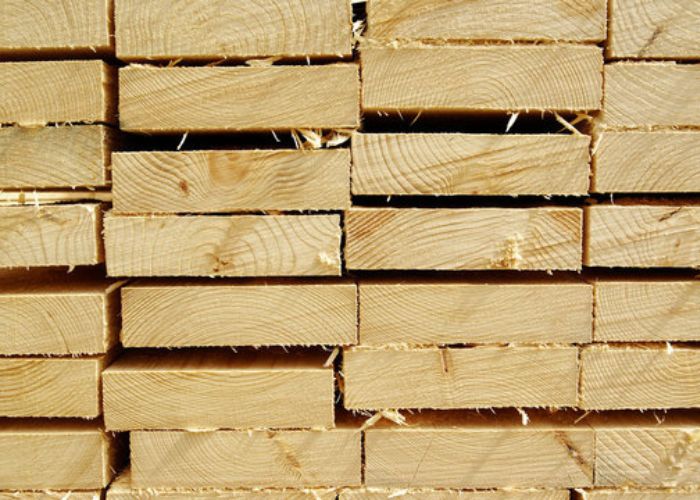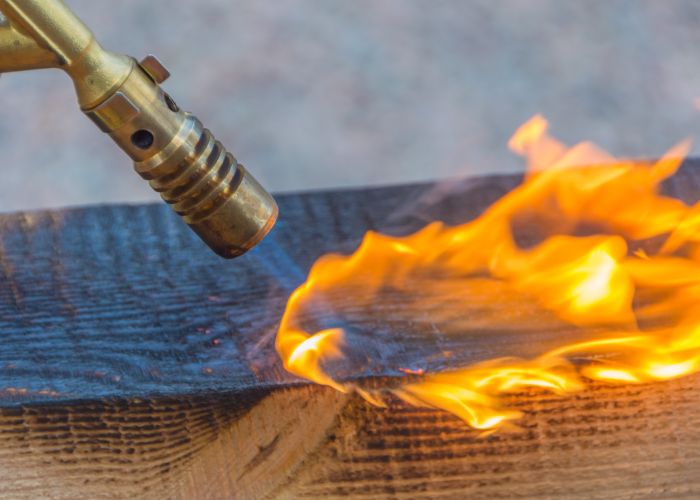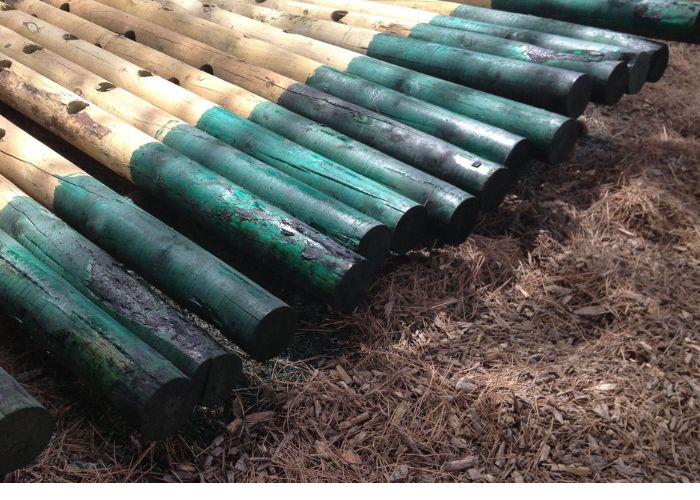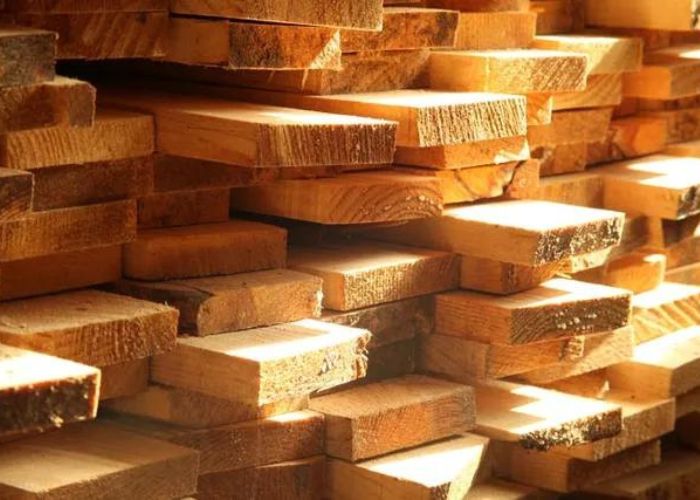After assembling your deck or putting up your new fence, you still have remaining pressure treated lumber. But, since you have no area for storage, you now wonder, “can you burn pressure treated wood?”
The wood has undergone treatment so it can absorb preservatives. This raises questions on whether you should use the excess wood, keep them in wood storage racks, or dispose of it immediately.
In this guide, we’ll find out the following;
- Is it safe to burn pressure-treated wood?
- Can you burn treated wood in a fire pit?
- What happens if you burn pressure treated wood
- Symptoms of burning treated wood
- What’s the best way to dispose of treated wood safely, and what to do in case you still have old treated wood.
Let’s get started!
Can you Burn Pressure Treated Wood?
No. You should never burn pressure treated wood. This is because the preservative used during the pressure treatment poses a great danger to living organisms. In fact, the U.S. Environmental Protection Agency considers pressure-treated lumber as hazardous waste.
First things First: What is Pressure Treated Wood?

Pressure treated wood is wood that has undergone pressure treatment. In it, wood is placed in a pressure chamber full of liquid preservative chemicals.
To double-check if the wood is pressure treated, look for half-inch long splits on all surfaces. This is where pressurized chemicals were injected. Treated lumber usually has a greenish or dark brown color.
The most common preservative being used is alkaline copper quat or ACQ. This is because copper is poisonous to insects and fungi that might cause pressure treated wood rotting.
As a result, wood is less susceptible to damage caused by insects and rot, water, and fire, but not to moisture, UV rays, and corrosion.
With this in mind, is it bad to burn treated wood? Yes, it sure is.
Why is Burning Pressure Treated Wood Hazardous?
It is hazardous to burn pressure treated lumber. By burning pressure treated lumber, the preservatives in the wood aren’t destroyed but released with the smoke.
Plus, burned treated wood’s ash and ash dust are dangerous and contain a lethal dose of chemicals. This is so because burning pressure treated would release the preservative.
This preservative is either a fungicide or insecticide, used to protect the pressure treated wood from fungi, insects, and other microorganisms. Thus there’re great health risks burning treated wood that negate the convenience of easy disposal by burning.
The Journal of American Medical Association related a family reported this experience after burning pressure lumber treated with Chromated Copper Arsenate (CCA) in a wood stove to keep them warm.
After exposure to the smoke of burning CCA lumber, their hair fell out, and they had severe, recurring nosebleeds. They also experienced extreme fatigue and crippling headaches.
The parents complained about having blackouts, which were followed by long periods of disorientation. Children, on the other hand, suffered frequent seizures.
These effects were traced to them inhaling dust laced with arsenic.
Due to the known ill-effects on health, regulators and health organizations caution against burning treated wood or using it to make yakisugi furniture. They warn against leeching of the preservative on the skin, the soil, and other wood surfaces.
Environmental Effects of Burning Pressure Treated Wood

As mentioned, burning wood releases its preservative. But the environmental risks aren’t limited to this. Chemicals leaching toward the surface may also contaminate groundwater and the soil.
For this, it’s important to seal pressure treated wood. This will prolong the durability of the wood and the adherence of the preservative, preventing them from leeching to the wood’s surface.
The bottom line is, burning treated wood is dangerous. Burning will cause air and soil pollution as wood preservatives are released into the air, and the burned wood’s ash is produced onto the soil.
What Happens if You Accidentally Burn Pressure Treated Wood
If you accidentally burn pressure treated wood, chemicals are released. These pose a risk to people’s health and the environment.
In case you accidentally inhale the smoke, it may not cause immediate harm. But be on the lookout for these effects and symptoms of burning treated wood:
- Respiratory inflammation
- Upper respiratory tract infections
- Permanent irritation in bronchial tubes
- Lung cancer
- Damage to the throat and lungs
Effects of Accidentally Ingesting Dust of Treated Wood
In case this happens, it may cause damage to:
- The stomach
- The digestive tract
- Intestines
- The kidneys
And in case the wood comes into contact with skin, expect possible skin irritations from copper and alkaline and allergic reactions from boric acid.
How to Tell if Wood is Treated for Burning
There’s no type of wood that has undergone the preservation process and is suitable for burning. So, therefore, when you identify the lumber you have as pressure treated, best to separate them and use the untreated wood for burning.
New Wood Preservatives
Given the ill-effects of Chromated Copper Arsenate (CCA) wood, manufacturers searched for other chemicals that are safer and more environmentally friendly.
To give you an idea of the preservatives we’ve been talking about, here are the most commonly used for treating wood. They reduce rot and keep away the elements and wood-eating insects:
ACQ or Alkaline copper quat
Contains copper and a quaternary ammonium compound. ACQ protects against decay fungi and insects.
Experiment results showed ACQ-treated wood is non-toxic when skin and mouth are exposed. But copper did leach out when the wood was cut or ground. Research showed ACQ leaches out more than CCA but is considerably less toxic.
Moreover, scientists warn of a possible explosion caused by ACQ when it’s near a fire or an ignition source.
Borates
Poisonous to wood-boring insects and fungi but has low toxicity to people
Copper azole (CA)
Makes wood resistant to decay, fungi, and termites. The problem is, a 2014 study found that CA leaches into adjacent soil when used in the garden.
Yet, there’s no direct effect unless the copper residue is ingested. A separate 2014 study said an acute toxic exposure for children less than eight years old if they ingested most of the copper residue on their hands and feet.
The same study, however, says the copper would not be toxic for the skin.
Copper naphthenate

It’s not identified as a hazardous air pollutant or reproductive toxin. It also has no known carcinogen and has low toxicity to the skin, nose, and mouth. Copper and naphthenic acids, however, are known skin irritants.
Yet, inhalation may block nasal membranes and cause difficulty in breathing. Constant exposure may cause anemia and weaken membranes which make people vulnerable to other toxins.
Like petroleum, copper naphthenate has carcinogenic compounds such as benzene.
Copper-HDO (N Cyclohexyl Diazonium Dioxy-copper)
Lumber treated with Copper-HDO is used in outdoor projects and wood products such as decks, utility poles, rails, and fences. The preservative protects wood from decay, rot, fungi, molds, and other insects.
It won’t leach into soils nor contaminate groundwater. It has low toxicity to humans, but this is poisonous to aquatic life. This is also not recommended for food packaging.
Polymeric betaine
It has low toxicity levels and can be used for people’s projects, such as outdoor furniture. It is anti-fungal, rot and insects, and sap stain.
These new preservatives produce low toxins for people, animals, and the soil compared to CCA. One good thing they do for the environment is they make treated lumber last longer. That’s why you’ll lessen the need to cut trees.
But the same preservatives make the wood dangerous for burning. We don’t want these to be released into the air, so there should be no reason to burn wood that was pressure treated.
Whether you’re using the wood or disposing of it, you’ll need protection when handling treated wood. Use gloves, safety goggles, and a dust mask, so you are protected from harmful exposure.
See also: Can you use pressure treated wood for furniture outdoors?
Is it OK to Burn Old Treated Wood?
No. It’s not okay to burn treated wood. You have the same set of toxic chemicals you’re going to release into the air once you burn the lumber. Neither should you throw pressure treated wood in a vacant lot or the bin with other rubbish?
Time doesn’t make a difference in the composition of treated wood. If anything, there’s an increased risk of the preservative leaching on the wood’s surface and the risk of the preservative leaching into the soil.
For this, you factor in the elements that continuously pound the wood and test its preservative, eventually causing the chemicals to move up into the surface and the soil.
Can you Burn 20 year Old Pressure Treated Wood?
No. Do not burn a 20-year-old treated wood. Preservatives would be as toxic and could be even more. Until 2003, the most popular treated wood was CCA wood, which has a light green color and is laced with copper chrome and arsenic. Arsenic is a known carcinogen.
Burning would subject people to arsenic poisoning. It’s for the arsenic that has been banned for use in residential settings and no longer sold in hardware stores since 2003 and can now only be for industrial use.
Can you Burn 25 year Old Pressure Treated Wood?
No. Do not burn a 25-year-old treated wood. Despite the expectation, the chemicals have dissipated, the health hazards and toxic fumes would not be worth the convenience of disposal.
Plus, there’re proper ways to dispose of treated wood. And, remember, if you are in the United States, it’s illegal to burn pressure treated wood in all 50 states.
Can you Burn Treated Wood Outside?
No. It’s not okay to burn treated wood in a fire pit or fireplace to keep you warm. Regardless of the location or purpose, you’ll still subject yourself to toxic chemicals when you burn the treated wood.
This can result in skin irritation, asthma-like symptoms, difficulty in breathing, damage to the stomach and intestines, among others.
Moreover, it doesn’t matter whether you do it indoors or in the open air. Thus, it’s not okay to burn treated wood outside. Plus, it’s not only the burning wood that’s toxic but also the ash that can be blown into the air and carried to your neighbors.
See Also: Is pressure treated wood safe for indoor use?
Can you Burn Green Treated Wood?
Green treated wood is another name for wood that has undergone pressure treatment. The lumber still has a natural color but with a hint of green.
Given that green treated and pressure treated wood is the same, the answer is no. You cannot burn green-treated wood.
Can you Burn Wolmanized Wood?
Wolmanized wood is another name for wood treated with CCA. Given its composition, it’s highly poisonous with arsenic in it.
When you burn it, swallowing only a few grams of this ash can be harmful. Symptoms can include nausea, vomiting, diarrhea, and irritation in the skin.
To recap, under no circumstance should you burn pressure treated wood.
How do you get Rid of Pressure Treated Wood?
With burning not an option, how do you dispose of pressure treated wood? For one, it’s not advisable to recycle and use the same for furniture and other projects. Thus, here’s what you should do:
Store in specialized bins
If you can’t dispose of the lumber immediately, best to keep these in specially marked bins for easy identification, and you don’t inadvertently recycle or burn the wood. Cut the wood before putting it in the bins.
But, can you put wood in recycle bin? Find out in our guide.
Coordinate with your local landfill
The proper way is to let your local authorities handle treated wood disposal. Feel free to contact them to confirm if the landfill near you accepts treated wood. Then, you can bring the same to the said landfill.
Related Post: How to Stabilize Wood From Warping Outside
FAQs
Does treated wood burn?
The treated wood will definitely burn if subjected to heat. However, it is crucial to avoid burning pressure-treated wood due to the hazardous and carcinogenic waste released from the preservatives used in the treatment process. Instead, consider using non-pressure treated wood outdoors for safer alternatives.
Can you burn new pressure treated wood
No, you should never burn new pressure-treated wood. Never use pressure treated wood for wood burning projects. New treated lumbers even come with warning tags on their ends discouraging users from burning them. The chemicals used in treated wood are not only toxic to you but also dangerous to the environment.
Will concrete rot pressure treated wood?
No. Pressure-treated wood won’t rot on concrete, making it perfect for outdoor use like decks and patios due to its durability. Preparing the concrete surface before installation is crucial. Once ready, pressure-treated wood boards can be securely nailed onto the concrete surface.
How long does treated wood take to dry?
Treated wood typically takes 6 to 12 months to dry before applying finishes or using in projects, helping to prevent warping and shrinkage. Pressure treated wood dry time varies based on treatment type, wood thickness, climate, and humidity. Patience during this period ensures the wood’s stability and longevity in various applications.
Burning Treated Lumber Summary
To answer the question ”Can you burn pressure treated wood?” the answer is no. Regardless of the age of the wood, the purpose, or the location (indoors or outdoors), don’t light it up and risk your health and the environment.
The proper way to dispose of treated wood is to give it to local landfills that authorities manage and let them get rid of the wood accordingly. With this, you and your family are safe from the dangers posed by the chemicals in the wood.
Read also: Is wood a good electrical insulator?
What Next?
You might have heard that you are not supposed to stain or paint pressure-treated wood because it can cause peeling, blistering, and other problems.
But the fact is that painting pressure-treated wood is actually very safe if done right – as long as you know what precautions to take.
Read on for everything you need to know about how to paint pressure-treated wood without any issues! Or learn how long to wait before staining pressure treated wood.

